Korean Peninsula: Missiles and Missile Missiles
Missile defense deployment and its consequences
The official reason for the deployment of the US missile defense system in South Korea was the aggressive actions of Pyongyang. The two states of the Korean Peninsula, from their very appearance, have very strained relations, and now it is believed that the standoff has intensified again. Not only two Koreas are forced to respond to the threats posed by the two neighboring countries, but also the neighboring states, as well as third parties having their own interests in the region. The latter include the United States, which has friendly relations with the Republic of Korea.
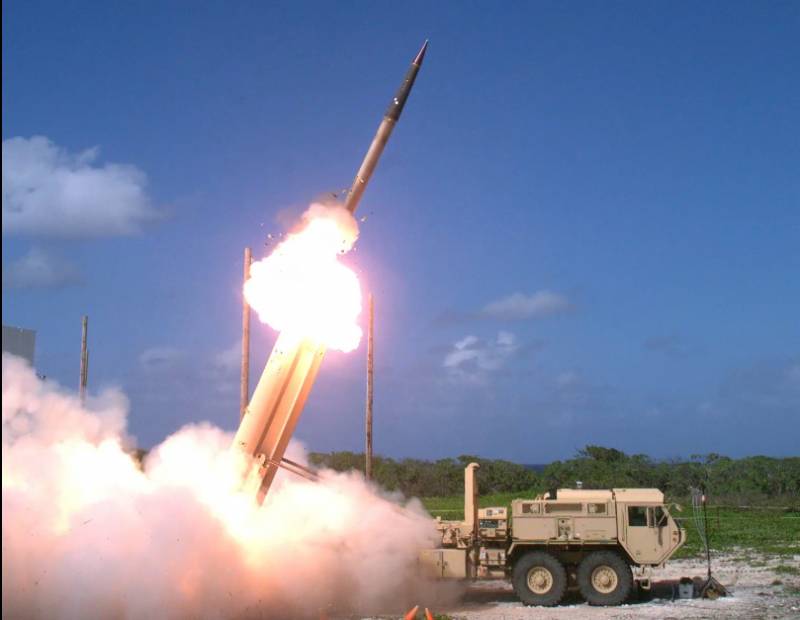
The launch of the anti-missile missile system THAAD, November 2015. Photo Agency for Missile Defense
The issue of deploying a US missile defense system in South Korea was raised a few years ago. At the end of 2013, the official Seoul made a similar proposal, justifying it with the great risks associated with Pyongyang’s nuclear missile program. Then it was reported that upon reaching an agreement, the THAAD complexes would take up duty until the end of 2017. From 2014 to 2016, the United States and South Korea conducted the necessary negotiations and determined the conditions for organizing a joint missile defense. All necessary plans were formed by the middle of last year.
In early March of this year, the first vehicles from the THAAD anti-missile complex were sent to the Republic of Korea. Soon they were joined by the rest of the necessary equipment. At the end of April, all the cars of the first set went to a future position, after which the deployment of the complex began. 2 May officials reported completion of the necessary work and the readiness of the complex for combat duty.
According to official statements by Washington and Seoul, the anti-missile system was deployed due to the presence of a missile threat from the Democratic People’s Republic of Korea. In the event of the beginning of a full-scale conflict, the THAAD complexes will have to intercept enemy ballistic missiles and protect important South Korean facilities, cities, etc.
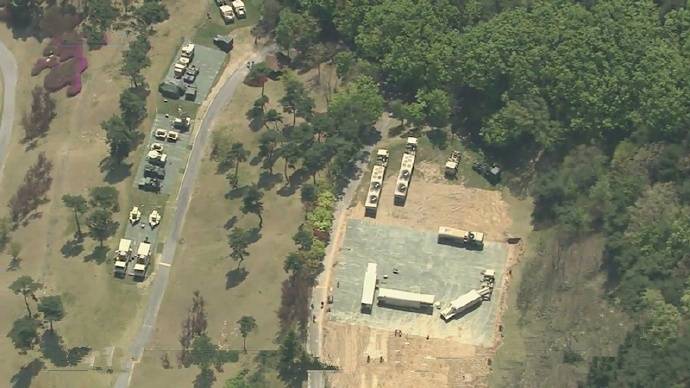
The position of the missile defense complex in South Korea. Photo Dambiev.livejournal.com
It should be noted that long before the deployment of complexes - even at the stage of bilateral negotiations - there were other versions and assumptions regarding the use of such equipment. Thus, the placement and characteristics of the THAAD complex suggest that not only North Korean but also Chinese ballistic missiles will become its targets should a hypothetical conflict begin. Certain features of the situation in the region and the specifics of relations between countries make it possible to consider this version fairly plausible.
In addition, the Chinese authorities have already commented on the joint work of the United States and South Korea. The Ministry of Foreign Affairs of China once again reminded that Beijing is against the deployment of anti-missile systems on the Korean Peninsula. A spokesman for the Foreign Ministry urged participants in deploying such systems to abandon such actions. In addition, it was noted that the Chinese military would be forced to take certain measures aimed at protecting the interests of their country.
Thus, regardless of the current actions, plans and official statements of the parties, the current situation with the South Korean missile defense could be another reason for the deterioration of the situation in the Far East. The attempt of the United States to protect its ally in the face of the Republic of Korea looks quite aggressive towards North Korea, and also affects the interests of China. Consider the current situation in terms of technology and its use in real combat operations.
Missile Defense
Protecting objects of South Korea from a possible missile attack is proposed using the complex THAAD (Terminal High Altitude Area Defense). As part of this complex there are several separate tools for various purposes, mounted on a standardized automobile chassis. This architecture of the complex allows you to quickly transfer it to the desired area, as well as in the shortest possible time to deploy at the specified position.
The battery THAAD includes its own radar detection and tracking targets type AN / TPY-2. This system allows you to find dangerous objects at distances up to 1000 km. Data from the radar is processed by a separate command post BM / C41, responsible for the overall management of the complex and the issuance of target designation to missiles. Also, the battery has in its composition four self-propelled launchers with ammunition in 60 antimissiles.
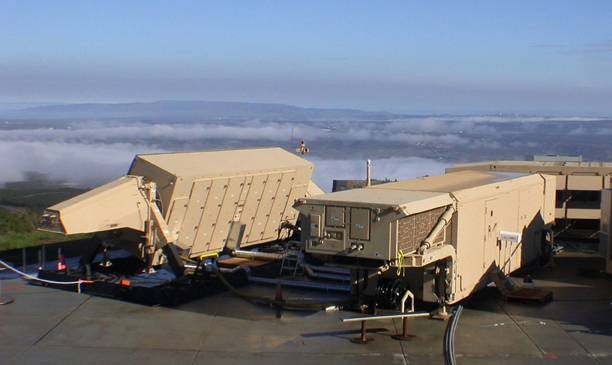
Radar detection and guidance AN / TPY-2 of the anti-missile system. Photo US Army
The THAAD missile is a guided anti-aircraft munition using the kinetic principle of hitting a target. It is built on a two-stage scheme and is equipped with solid fuel engines. Combat stage or Kill Vehicle is equipped with its own infrared homing head, which is used to accurately reach the target. The defeat of an enemy missile is made without the use of a warhead: it is destroyed in a collision at high speeds.
According to available data, with a length of 6,17 m and a launch mass of 900, a kg of the THAAD anti-missile complex can reach speeds of up to 1 km / s. The firing range is about 200 km. Available characteristics provide the ability to intercept ballistic missiles of medium and short range. Such opportunities have already been confirmed in several tests. The possibility of intercepting combat units of intercontinental missiles, which are distinguished by high speed on the descending part of the trajectory, is absent.
To date, the THAAD missile defense system has been adopted by the United States and put into series. The first production vehicles went to serve on the Hawaiian Islands, where they are responsible for covering the bases of the naval forces. Later, a similar complex was deployed on about. Guam. There are several agreements on the future deployment of anti-missile systems abroad. The agreement with South Korea is already being implemented. Also, missile defense can be deployed in the United Arab Emirates, Japan, etc.
DPRK rockets
The strategic forces of the Democratic People’s Republic of Korea have a variety of missile weapons with different characteristics. Not so long ago even their own intercontinental ballistic missiles were put into service. However, in the context of a hypothetical conflict on the peninsula and the location of the THAAD complex in its southern part, only short- and medium-range complexes are of interest.
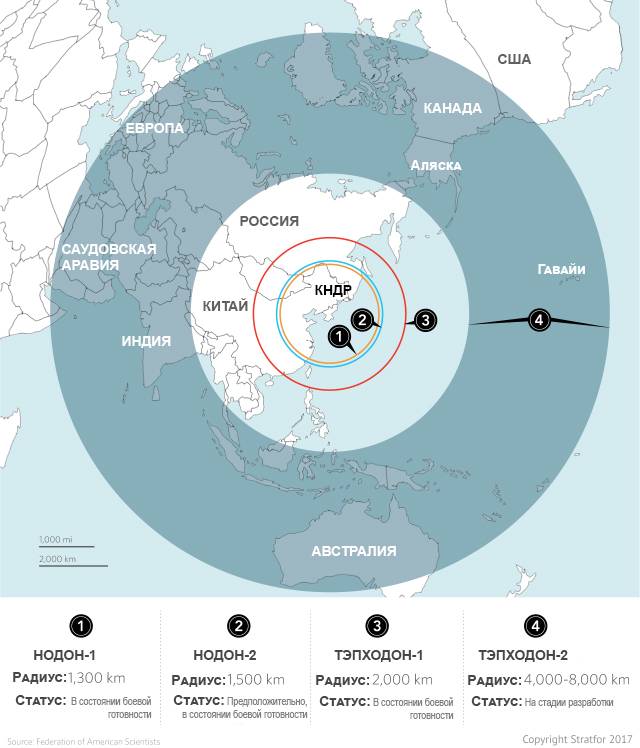
Areas of defeat of North Korean missiles. Stratfor Figure
At least since the late nineties of the last century, the DPRK has been keeping on duty medium-range missiles of its own family, known under the unofficial name "Nodon". The first rocket of this line was developed on the basis of previously purchased Soviet-designed complexes and retains a certain continuity of design. By increasing the size of the rocket, increasing the stock of fuel and refining the power plant, the flight range was increased to 1300 km, the drop weight was increased to 1 t. There is also an improved version of this rocket with a flight range 1500 km.
In 2010, the DPRK for the first time showed a mobile soil complex with a Musudan missile. According to the popular version, the latter was created on the basis of the Soviet / Russian product P-27. The ballistic missile of submarines of foreign development was increased, equipped with a new warhead, finalized the power plant and control systems, as well as carried out some other work. The result was a land-based rocket capable of sending 1000-kg combat unit to a distance of 3-4 thousand km.
There are at least two rockets of the Hwaseong family, also known as Tephodon. The rocket of the first model of the family has a two-stage design and carries an 750-kg warhead. Flight range - 2000 km. Later, the Hwaseong-2 rocket was created, having minimal resemblance to its predecessor, Hwaseong-1. Due to the use of a larger hull with new engines and increased fuel tanks, the flight range was increased to 6-6,5 thousand km, which allows to refer this rocket to intercontinental.
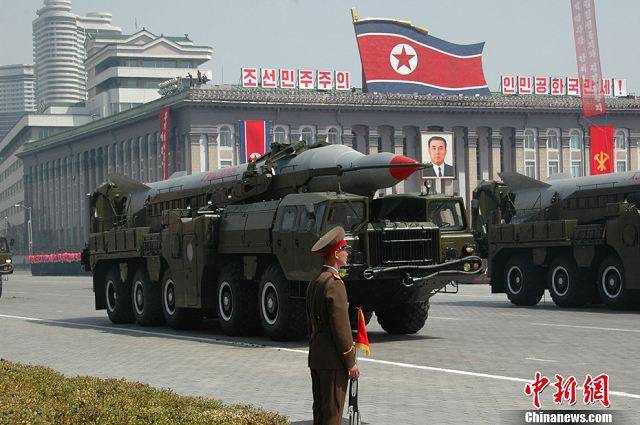
The Khvason / Nodon rocket complex. Photos of Chinanews.com
Precise information about the quantitative and qualitative state of the strategic forces of the DPRK, for obvious reasons, is not available. Foreign intelligence agencies are trying to find an answer to a similar question, but it is always only a matter of approximate estimates with some accuracy. According to various data and estimates, the Korean People’s Army has several dozen ballistic missiles of one type or another in service and on duty. Some such products have the ability to carry both conventional and special warhead. Thus, even now, the North Korean armed forces have a theoretical possibility of delivering a massive strike at potential enemy targets, including using nuclear weapons. weapons.
Given the specifics of the international situation in the region, Pyongyang continues to work on new missile systems. Thus, in mid-February of this year, the first test launch of a promising medium-range ballistic missile, the Pukkikson-2, took place. Like some other complexes of the existing types, the new one is based on a self-propelled tracked chassis, which increases its combat capabilities. As far as we know, a new type of missile is a modified version of the solid-fuel product “Pukkkson-1” intended for use on submarines.
China missiles
China differs from the DPRK in a more developed industry and economy. As a result, it has a more powerful army, including full-fledged strategic nuclear forces. As part of the latter there is a significant number of compounds equipped with missile systems of different types with different capabilities. According to the directory The Military Balance 2017, currently the PRC missile forces have 13 brigades armed with medium-range ballistic missiles. Another seven brigades armed with short-range missiles. There are also units with operational tactical complexes and systems with ground-based cruise missiles.
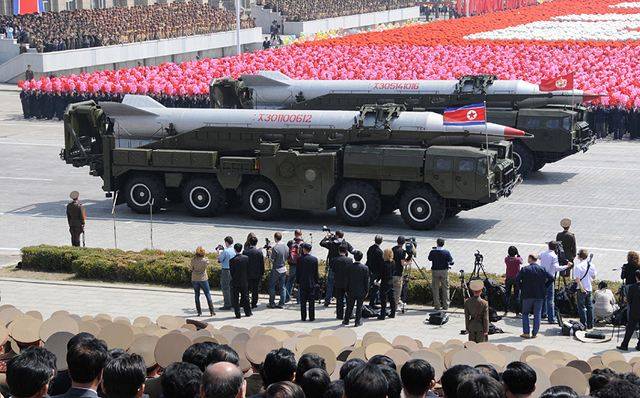
Korean missiles at the parade. Photo Armyrecognition.com
The most numerous weapons of the Chinese rocket forces are the Dongfeng-21 family of three modifications. Five brigades are armed with DF-21A systems, three are equipped with DF-21B complexes and two operate with DF-21D. Actually, it is the DF-21 family of rockets that currently form the basis of a group of medium-range missiles. Due to a certain difference in the characteristics of various modifications of such weapons, a certain flexibility of use is achieved in accordance with the existing combat missions.
A common feature of the Dongfeng-21 family is the use of self-propelled launchers on wheeled chassis. Also, in all projects, as far as is known, a two-stage rocket architecture is used. In other respects, rockets of different types have certain differences. Thus, the medium-range missile DF-21A, according to some data, is capable of carrying a special warhead with a power of 90 kt and flying to a range of 2700 km. The modification of the DF-21C differs reduced range of 1700 km, but is equipped with a more sophisticated guidance system using satellite navigation. Of particular interest is the complex DF-21D. This ballistic missile is designed to destroy enemy warships. At the moment, it is the only ballistic anti-ship missile in the world.
Further development of the DF-21 family of rockets was the product DF-26. Due to the most serious reworkings of the design, the firing range was brought to 3-4 thousand km. A solid-fuel rocket is capable of carrying a monoblock warhead, including a special one. Transportation and launch are carried out using a six-axle self-propelled launcher. Not later than 2015, the Dongfeng 26 rocket was put into service and entered the series. To date, at least one brigade with such weapons has been deployed.
The grouping of short-range missiles is represented by the Dongfeng-11 and DF-15 complexes. Like their middle-range “brothers”, these systems are based on wheeled chassis and carry guided missiles. In the case of the DF-11, the warhead is delivered to a distance of 500 km. The newer DF-15 complex sends the 500-kg head to 600 km.
According to reports, at present, China has about 160 medium-range missiles. These are the 16 DF-26 and 80 DF-21 missiles of all modifications with special warheads. Conventional warheads carry 12 missiles DF-16, before 36 installed on DF-21C and around 18 on anti-ship DF-21D. The total number of short-range missiles is up to 190 units. Most of this grouping is made up of DF-11 missiles.
Rockets and Missile Missiles
As we see, the deployment of anti-missile systems in South Korea can indeed have certain grounds. Neighboring states have advanced missile forces with very powerful weapons. In addition, a sufficiently large number of missiles are on duty, which makes the situation even more difficult. As a result, the official Seoul and its main ally in the face of Washington have a good reason for deploying the THAAD complexes.
When deploying one THAAD battery, South Korea and the United States are able to protect against a massive missile strike. With good luck, the missile defense system, using the available ammunition, can knock down several dozen enemy medium-range missiles. At the same time, various features of combat use in conditions of real conflict can significantly reduce this number and worsen the overall performance of THAAD.
In this case, a variety of factors can affect the results of missile firing and interception of flying combat units. First of all, the problem for the South Korean missile defense system will be the means of breakthrough that can be installed on the potential enemy’s missiles. Thus, the impossibility of a guaranteed calculation of a false target will lead to an unjustified waste of anti-missiles. The second serious problem for missile defense will be the scale of the strike. With the simultaneous launch of dozens of missiles, only a certain percentage of such weapons will be shot down while approaching, while some combat units will still be able to break through to their targets. In this case, the THAAD system itself will be the priority target for the enemy’s missile systems, and, as a result of its destruction, the South Korean facilities will remain without serious protection.
It is obvious that the deployment of the THAAD anti-missile complex in the Republic of Korea does not guarantee the complete prevention of any damage from a massive strike by a potential enemy. At the same time, part of the missiles will be intercepted, with corresponding consequences for the conflict as a whole. This problem can be partially solved by deploying new anti-missile systems covering the most important areas of South Korea.
Despite another deterioration in the region, open conflict has not yet begun. Moreover, most likely, this time, Seoul and Beijing will exchange aggressive statements, after which the previous situation will be restored, as has already happened many times. Nevertheless, even in the absence of an open confrontation, THAAD anti-missile systems are the reason for the additional deterioration of relations of several countries at once. The deployment of missile defense in the region affects the interests of China and North Korea, and they, as follows from recent statements, do not intend to put up with it.
The most likely scenario is a scenario in which the countries of the region and other interested states will continue to exchange various statements, as well as conduct exercises, deploy new weapons and otherwise demonstrate the firmness of their intentions. However, it is unlikely that anyone will decide to bring the situation to an open conflict. Such events have already taken place more than once and have always ended that way. However, it must be borne in mind that the current stage of the Korean crisis differs from the past by the presence of a new factor: the confrontation of missiles and anti-missile systems.
Based on:
http://reuters.com/
http://bbc.co.uk/
https://ria.ru/
http://tass.ru/
https://utro.ru/
http://rbase.new-factoria.ru/
http://globalsecurity.org/
http://imp-navigator.livejournal.com/
The Military Balance 2017
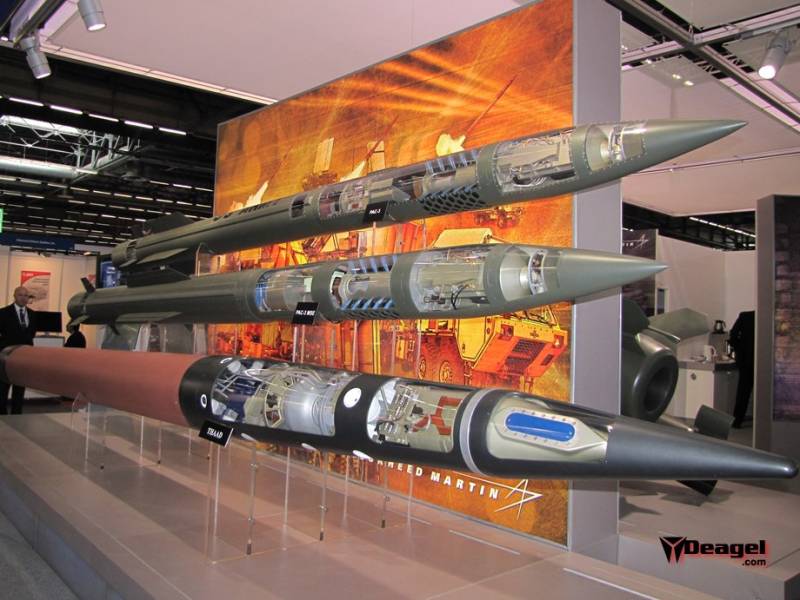
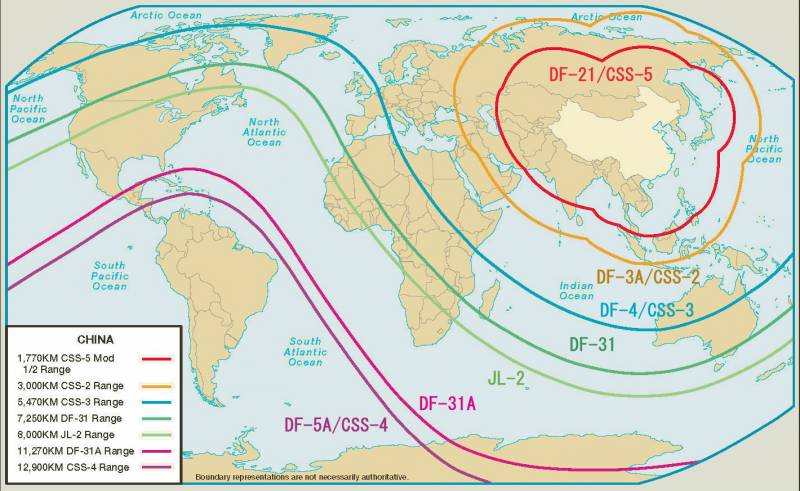
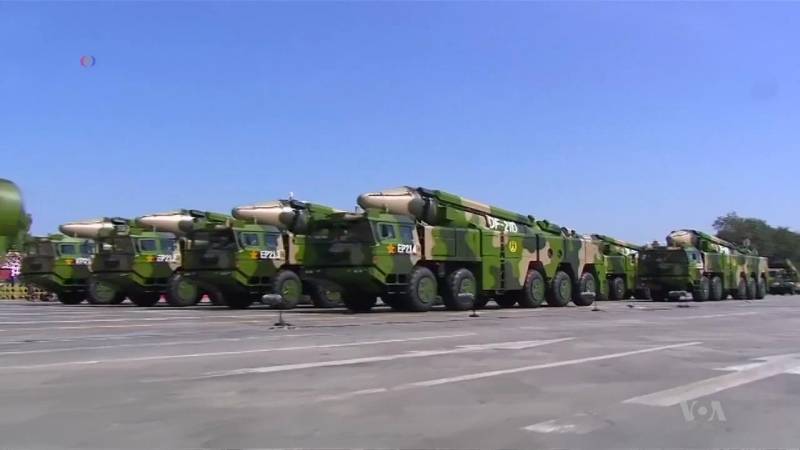
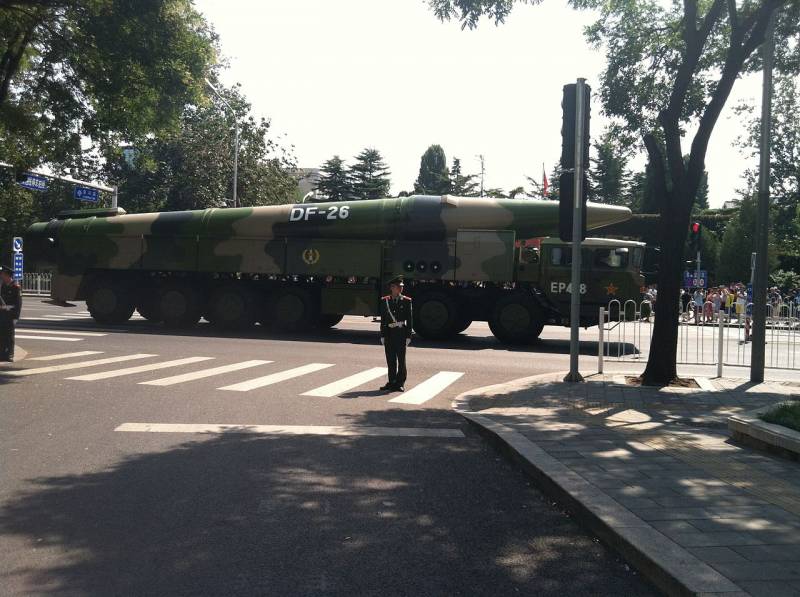
Information